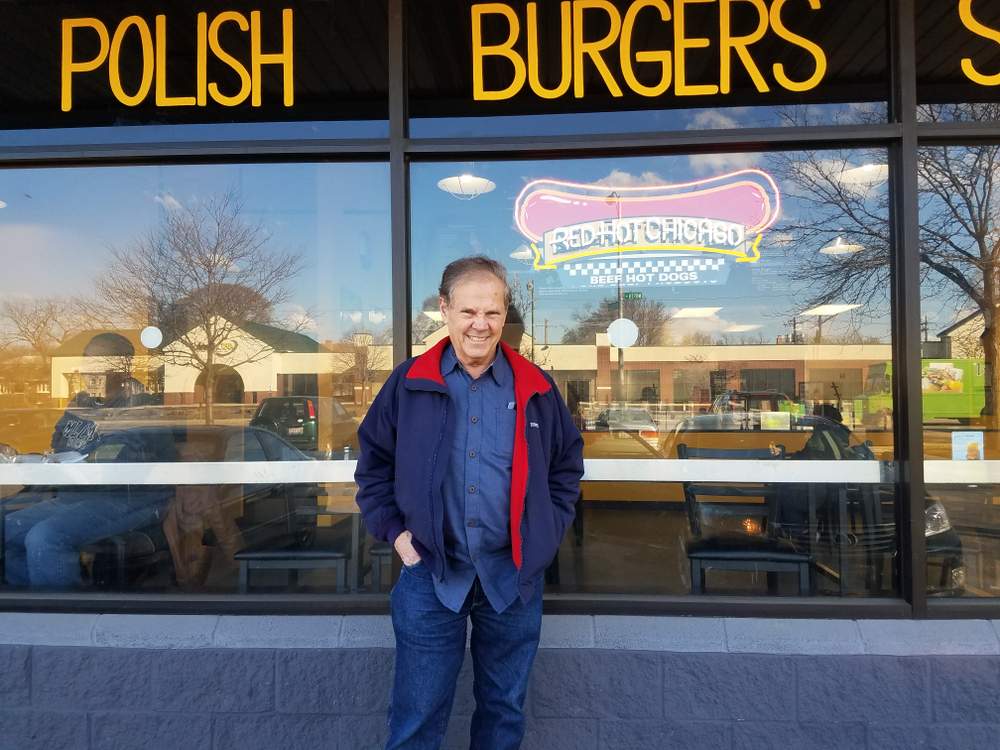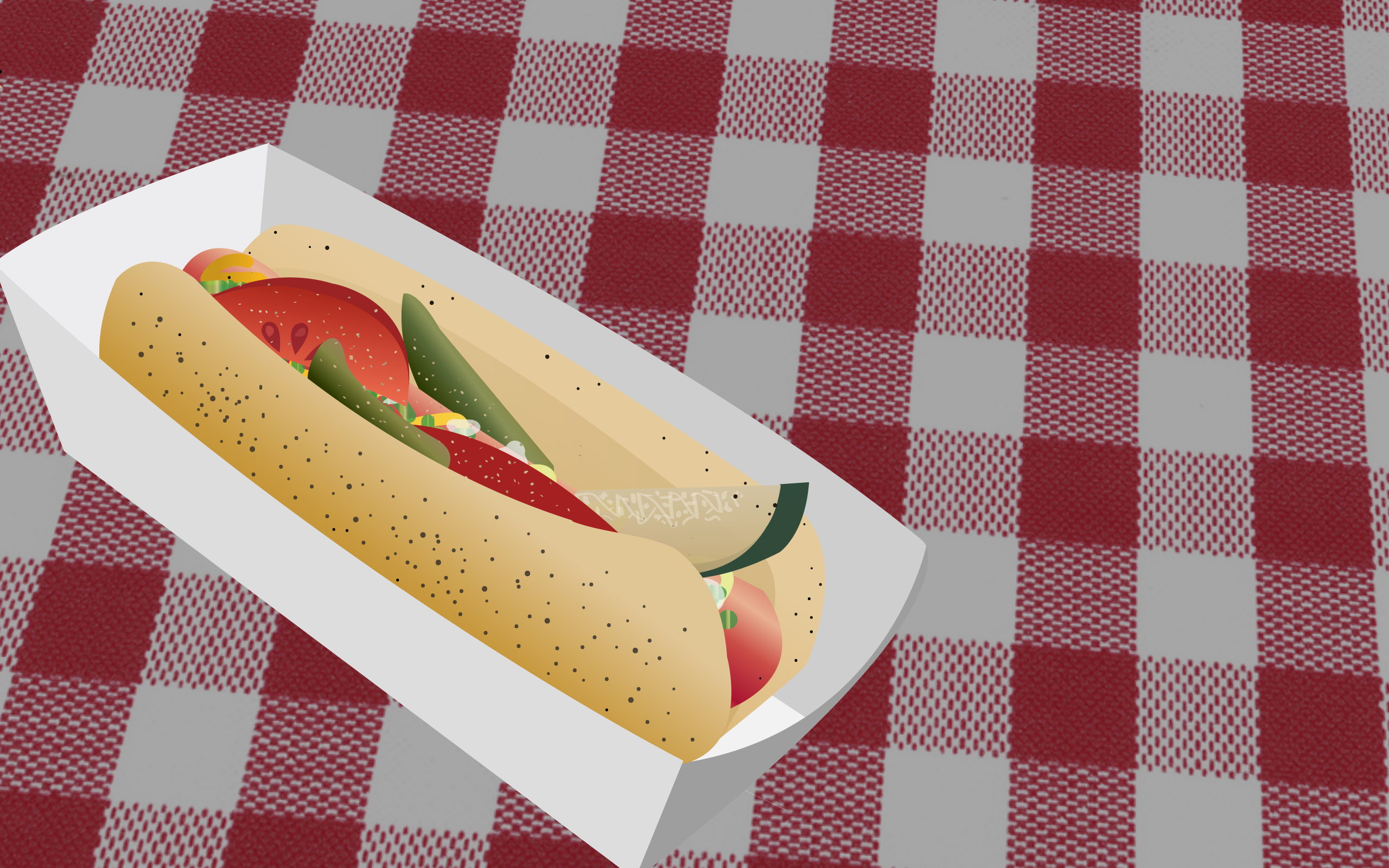It all starts with a snappy all-beef wiener, one that gets nestled in a steamed poppy seed bun and topped with yellow mustard, chopped onions, neon-green relish, two slices of tomato, a dill pickle spear, two sport peppers and a final whoosh of celery salt.
But how did this peculiar group of ingredients come to define Chicago-style hot dogs?
Several Curious City fans — including Jill Westerfelhaus, Gus Lopez and Nina Diehl — have sent in questions over the years about this taste combination. They wanted to know who invented it, when it was invented and why it’s so strongly-associated with the city.
The answers add up to more than just delicious food trivia. This particular combo of ingredients tells the story of early 20th century immigration to Chicago — especially to the Maxwell Street Market area, around Halsted Street and Roosevelt Road.
There may be no better person to walk us through this story of food and immigration than historian Bruce Kraig, the author of several food histories including Man Bites Dog and Hot Dog: A Global History.

Bruce Kraig, author of Hot Dog: A Global History (WBEZ/Monica Eng)
Kraig notes that Abe Drexler [founder of Fluky’s hot dog stands] claimed he invented the Chicago-style dog around Maxwell Street in the late ‘20s, but that “there isn’t really any evidence for that.” Instead, Kraig says, the dish came together through contributions from many Chicago ethnic groups, and evolved into a fixed style between 1920 and 1950.
“By the 1930s, hot dog stands that were fixed and permanent served something like this style — not always with everything,” he said. “But then this final style evolved after World War II and was part of Chicago’s move to big [industrial] food, for which the city is famous.”
Over a couple of hot dogs at Felony Franks in Oak Park, Kraig walked me through each ingredient, one by one, explaining how it joined this iconic Chicago dish. Scroll through his explanations below.



